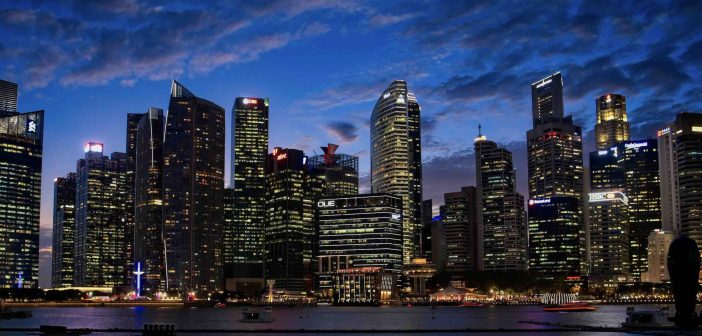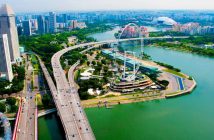Urbanization in Asia, especially in China, has significantly impacted the real estate landscape. Over the past two decades, China has seen a dramatic increase in urbanization, with its rate escalating from 29.92% in 1997 to 58.52% in 2017. This rapid urban growth has led to profound changes in housing development and government policies, directly influencing real estate trends and prices. The primary effect has been a substantial rise in housing demand and prices, particularly in emerging first-tier cities, which poses challenges and opportunities for both the government and the real estate sector.
Accelerating Urbanization in China
China’s urbanization, in its ‘acceleration phase,’ is characterized by the rapid growth of urban areas and a significant shift in population dynamics. Cities like Wuhan, Changsha, Chengdu, and Nanjing are at the forefront of this transformation, attracting a skilled workforce essential for urban development. However, this rapid urbanization has led to increased housing demand, pushing property prices upwards and exerting pressure on living standards.
Housing Development and Government Intervention
In response to these challenges, the Chinese government plays a pivotal role in urban planning and development. Its strategy includes controlling the expansion of large cities and encouraging the growth of smaller cities and towns. This approach aims to balance the urban-rural divide, improve living conditions in rural areas, and manage the housing market more effectively. The government’s intervention is also crucial in addressing the rising costs of housing and land, especially in areas experiencing extensive urban sprawl.
Government Strategies for Urbanization and Sustainability
In response to these challenges, the 19th National Congress of the Communist Party of China proposed a multifaceted housing system. This system aims to diversify housing supply sources, offer multiple channels of housing support, and encourage both the purchase and rental of homes. This approach is designed to facilitate a more balanced and steady urbanization progression.
Following the Third Plenary Session of the 18th Central Committee of the CPC, the Chinese government has launched new policies, including the National New-Type Urbanisation Plan (2014–2020) and the National New-Type Urbanisation Comprehensive Pilot Programme. These initiatives are geared towards ensuring steady progress in urbanization, reflecting a commitment to sustainable and balanced urban growth.
Economic Implications of Rising Housing Costs
The escalating cost of urban housing is significantly affecting the living expenses of city dwellers. This situation is contributing to a growing wealth gap, altering the distribution of household wealth, and undermining the economic viability of rural to urban labor migration. Additionally, the psychological toll of this transition is becoming increasingly apparent.
Talent Retraction and Economic Growth Challenges
The surge in real estate prices is not only a burden for urban residents but also deters skilled professionals, potentially leading to a ‘brain drain’. High housing and rental costs elevate operational expenses for businesses, which in turn undermines urban industrial agglomeration and hampers the formation of new economic growth drivers.
Real Estate Dynamics in Urbanization
The evolution of urbanization in China is closely intertwined with the real-estate sector. Following the reform and opening-up policy, the rapid urban development and industrial expansion attracted a large influx of rural workers to cities. This migration has upset the balance between housing supply and demand, leading to escalated housing prices. Furthermore, the scarcity of urban land resources and the high premiums on land contracts have further exacerbated this situation.
A detailed system is crucial in managing the intricate relationship between the real-estate market and the urbanization process. For instance, in projects like the Zion Road new condo development, we can observe how rational city planning and intensive land use come into play. A thoughtfully designed housing supply strategy, which considers the pace of urbanization, is fundamental in improving the housing guarantee system. Such strategic planning and implementation, as seen in the Zion Road new condo project, demonstrate how it’s possible to mitigate the adverse effects of polarization and impoverishment that are often associated with rapid urban development.
Disparities in Urbanization Rates
There is a noticeable disparity in the urbanization rates between China’s smaller and larger cities. This uneven development affects housing costs differently across regions and can lead to a mismatch between real-estate prices and living standards, either hastening or slowing the urbanization process disproportionately.
Strategic Regional Development and Urbanization
In response to the increasing labor costs in the eastern region of China, a strategic transfer of industries from the eastern coast to the central and western regions is underway. By moderating urbanization in the east and accelerating it in the west, a balance in housing prices can be achieved. This shift presents a pivotal opportunity for the central and western regions to fast-track their industrial restructuring, enhance urbanization rates, and bridge the urbanization gap between different areas.
Conclusion
In conclusion, China’s approach to urbanization is a complex, multifaceted strategy that requires careful balancing of regional development, government intervention, and policy initiatives. By focusing on equitable development, enhancing living conditions in rural areas, and ensuring a sustainable approach to city planning and housing, China aims to achieve a harmonious urbanization process that benefits all regions and their inhabitants. This strategy not only addresses current economic and social disparities but also lays the groundwork for a more stable and prosperous future.





3 Comments
Asia’s urbanization impact is profound, notably in China’s rapid growth, driving higher housing demand and prices in emerging cities. Government intervention focuses on balanced urbanization and sustainable housing through initiatives like the National New-Type Urbanisation Plan. Despite these efforts, escalating housing costs pose economic challenges, impacting living expenses and potentially leading to talent loss. Addressing regional disparities in urbanization rates requires strategic development for balanced housing and living standards. Interesting options of commercial property in Hong Kong you can find with MatchOffice.hk here: https://www.matchoffice.hk/ . In conclusion, China strives for equitable development, enhanced rural living, and sustainable city planning in its urbanization strategy.
Urbanization in Asia profoundly impacts real estate markets. Rapid population growth in cities drives demand for housing and commercial space, leading to skyrocketing property prices. This trend poses challenges such as affordability issues while also presenting lucrative investment opportunities for developers and investors. https://homers.ng
How is China’s urbanization described during its ‘acceleration phase,’ and what are some of the consequences of this rapid urbanization, particularly in cities like Wuhan, Changsha, Chengdu, and Nanjing?
Greeting : Telkom University